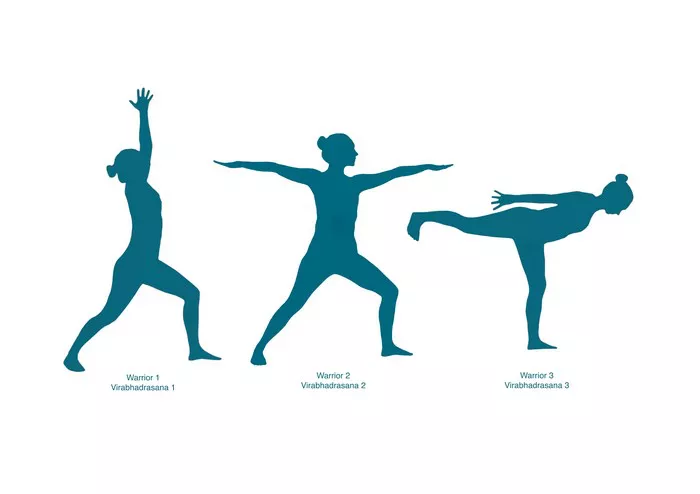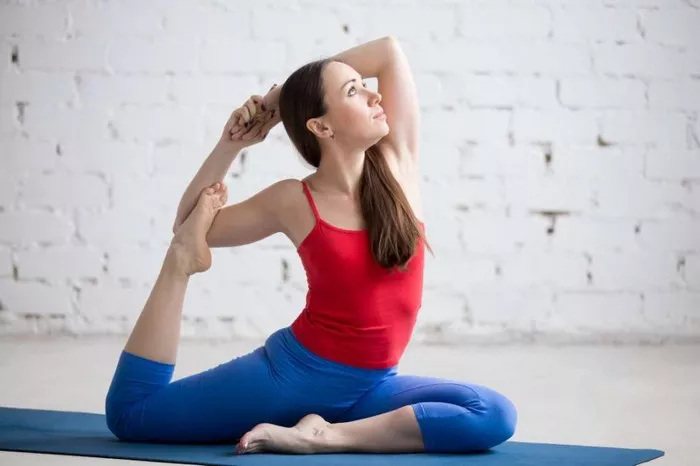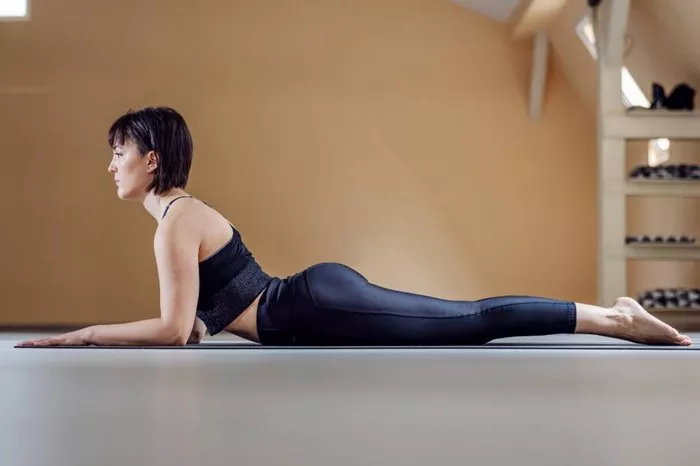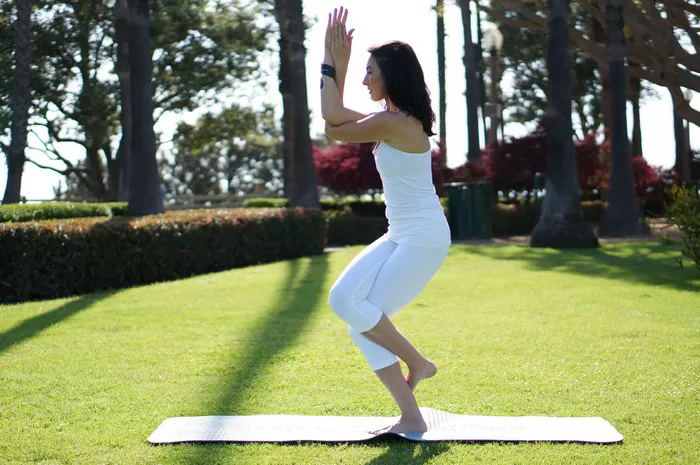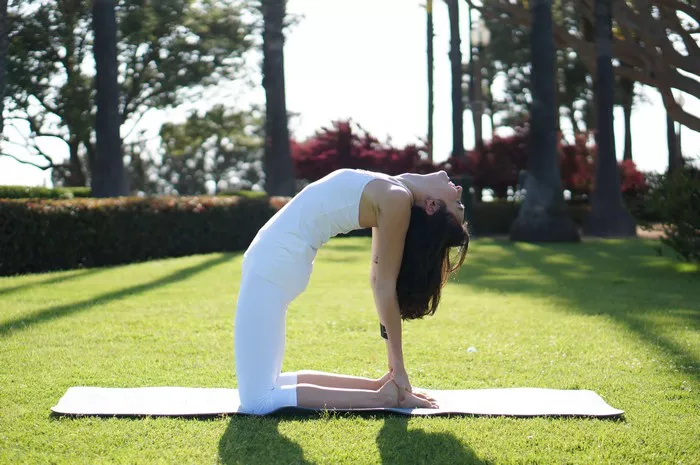Hatha Yoga, a branch of yoga that focuses on physical postures (asanas), breathing techniques (pranayama), and meditation, has gained immense popularity for its holistic approach to health and well-being. The term “Hatha” itself is derived from the Sanskrit words “ha” meaning sun and “tha” meaning moon, symbolizing the balance between opposing forces. Hatha Yoga aims to harmonize the body and mind, promoting physical strength, flexibility, and mental clarity.
One of the key benefits of Hatha Yoga is its accessibility, making it suitable for beginners and individuals of all fitness levels. Unlike some other forms of yoga that may focus more on spiritual aspects or intense physical practices, Hatha Yoga offers a gentle introduction to the practice, emphasizing foundational poses and controlled breathing techniques. This makes it an ideal starting point for those new to yoga or seeking a gentle way to improve their physical and mental well-being.
The 15 Basic Poses:
1. Mountain Pose (Tadasana):
Instructions: Stand tall with feet hip-width apart, arms by your sides, and palms facing forward. Engage your thighs, lengthen your spine, and relax your shoulders away from your ears.
Benefits: Improves posture, strengthens legs and core, promotes balance and focus.
Common Mistakes: Arching the back excessively or locking the knees. Ensure the weight is evenly distributed on both feet.
2. Downward-Facing Dog (Adho Mukha Svanasana):
Instructions: Start on your hands and knees, tuck toes under, lift hips toward the ceiling, and straighten your arms and legs. Press palms into the mat and lengthen through the spine.
Benefits: Stretches the hamstrings, calves, and shoulders, strengthens the arms and legs, energizes the body, and calms the mind.
Common Mistakes: Rounded spine, lifted heels, or collapsed shoulders. Keep the spine long and heels reaching towards the floor.
3. Warrior I (Virabhadrasana I):
Instructions: From Mountain Pose, step one foot back, keeping the front knee bent at a 90-degree angle and the back leg straight. Reach arms overhead, palms facing each other.
Benefits: Strengthens legs, opens hips and chest, improves balance and concentration.
Common Mistakes: Allowing the front knee to collapse inward or lifting the back heel off the ground. Ensure both hips are facing forward and the back foot is grounded.
4. Warrior II (Virabhadrasana II):
Instructions: From Warrior I, open hips and arms parallel to the floor, with the front knee still bent at a 90-degree angle. Gaze over the front fingertips.
Benefits: Strengthens legs and arms, increases stamina, improves circulation, and enhances focus.
Common Mistakes: Collapsing the chest or leaning too far forward. Keep the torso upright and shoulders relaxed.
5. Tree Pose (Vrikshasana):
Instructions: Stand tall, shift weight onto one foot, and place the sole of the opposite foot on the inner thigh or calf. Press foot into leg and hands together at heart center.
Benefits: Improves balance, strengthens legs and core, increases concentration, and calms the mind.
Common Mistakes: Placing the foot directly on the knee or leaning too far to one side. Keep the lifted foot above or below the knee and engage the core for stability.
6. Triangle Pose (Trikonasana):
Instructions: Stand with legs wide apart, arms parallel to the floor. Turn one foot out 90 degrees and reach toward that foot with the same-side hand, keeping the other arm extended upward.
Benefits: Stretches hamstrings, hips, and side body, strengthens legs and core, improves digestion and balance.
Common Mistakes: Overextending or collapsing into the side stretch. Keep both legs straight and engage the core while lengthening the spine.
7. Child’s Pose (Balasana):
Instructions: Kneel on the mat, sit back on your heels, and fold forward, extending arms overhead or resting them alongside the body.
Benefits: Releases tension in the back, shoulders, and hips, calms the mind, and aids in digestion.
Common Mistakes: Allowing the knees to splay wide or not fully relaxing into the pose. Keep knees together or hip-width apart and sink hips toward heels.
8. Cat-Cow Pose (Marjaryasana-Bitilasana):
Instructions: Start on hands and knees, arch the back and drop the belly towards the floor (Cow Pose), then round the back and tuck the chin towards the chest (Cat Pose). Repeat in a flowing motion.
Benefits: Warms up the spine, massages internal organs, improves flexibility, and relieves back pain.
Common Mistakes: Rushing through the movements or collapsing into the shoulders. Move slowly and with awareness, maintaining a fluid motion.
9. Bridge Pose (Setu Bandhasana):
Instructions: Lie on your back with knees bent and feet hip-width apart. Press into the feet to lift the hips towards the ceiling, keeping the shoulders grounded.
Benefits: Strengthens the back, glutes, and hamstrings, opens the chest and shoulders, improves spine flexibility, and relieves stress.
Common Mistakes: Squeezing the glutes too tightly or lifting the hips too high. Keep the thighs parallel and engage the core for stability.
10. Corpse Pose (Savasana):
Instructions: Lie on your back with legs extended and arms by your sides, palms facing up. Close your eyes and relax the entire body, focusing on the breath.
Benefits: Relaxes the body and mind, reduces stress and anxiety, improves sleep quality, and promotes mindfulness.
Common Mistakes: Allowing the mind to wander or tensing muscles. Focus on deep, even breathing and consciously release tension from each body part.
11. Seated Forward Bend (Paschimottanasana):
Instructions: Sit with legs extended, feet flexed. Hinge at the hips to fold forward, reaching for the feet or shins. Keep the spine long and gaze forward.
Benefits: Stretches the hamstrings, spine, and shoulders, stimulates the abdominal organs, and calms the mind.
Common Mistakes: Rounding the back or forcing the stretch. Maintain a straight spine and only go as far as comfortable while maintaining breath awareness.
12. Cobra Pose (Bhujangasana):
Instructions: Lie on your stomach, hands under shoulders, elbows close to the body. Press into the palms to lift the chest and gaze upward, keeping the shoulders relaxed.
Benefits: Strengthens the spine, opens the chest and lungs, improves posture, and relieves stress and fatigue.
Common Mistakes: Pushing into the hands too forcefully or collapsing into the lower back. Use the strength of the back muscles to lift, keeping the elbows close to the body.
13. Seated Twist (Ardha Matsyendrasana):
Instructions: Sit with legs extended, bend one knee and cross the foot over the opposite thigh. Twist towards the bent knee, placing the opposite elbow outside the knee and the hand on the floor behind the back.
Benefits: Improves spinal mobility, aids in digestion, detoxifies the body, and stimulates abdominal organs.
Common Mistakes: Forcing the twist or collapsing the chest. Lengthen the spine with each inhale and deepen the twist with each exhale.
14. Legs-Up-the-Wall Pose (Viparita Karani):
Instructions: Sit close to a wall and lie on your back, extending legs upward against the wall. Keep arms by your sides or place them on the belly or overhead.
Benefits: Relieves swelling in the legs and feet, soothes the nervous system, promotes relaxation, and improves circulation.
Common Mistakes: Allowing the legs to splay wide or tensing the muscles. Keep legs together and relax into the pose, focusing on deep breathing.
15. Standing Forward Bend (Uttanasana):
Instructions: Stand with feet hip-width apart, hinge at the hips to fold forward, reaching for the floor or shins. Keep legs straight or slightly bent if necessary.
Benefits: Stretches the hamstrings and calves, relieves tension in the back and neck, calms the mind, and improves circulation.
Common Mistakes: Locking the knees or rounding the back. Maintain a slight bend in the knees and lengthen the spine with each exhale.
Sequencing and Practice Tips:
To create a balanced Hatha Yoga practice incorporating the 15 basic poses, consider the following sequence:
1. Begin with a few rounds of Cat-Cow Pose to warm up the spine and connect with the breath.
2. Move into Downward-Facing Dog to stretch the entire body and build strength.
3. Flow through a sequence of standing poses such as Warrior I, Warrior II, and Triangle Pose to build strength, flexibility, and concentration.
4. Include balancing poses like Tree Pose to improve focus and stability.
5. Transition to seated poses such as Seated Forward Bend and Seated Twist to stretch the spine and stimulate the digestive system.
6. End your practice with gentle poses like Child’s Pose and Legs-Up-the-Wall Pose to relax the body and calm the mind.
7. Conclude with Corpse Pose for deep relaxation and integration of the practice.
When practicing Hatha Yoga, it’s essential to create a safe and conducive environment:
- Choose a quiet, clutter-free space where you can move freely without distractions.
- Use a yoga mat to provide cushioning and stability during poses.
- Ensure proper lighting and ventilation to maintain a comfortable atmosphere.
- Practice on an empty stomach or at least 2-3 hours after a meal to avoid discomfort.
- Stay hydrated throughout your practice by drinking water before and after.
Breathwork (pranayama) and mindfulness play integral roles in Hatha Yoga:
- Focus on deep, controlled breathing throughout your practice, syncing each movement with the breath.
- Cultivate awareness of sensations in the body and thoughts in the mind without judgment.
- Practice mindfulness techniques such as body scanning and visualization to enhance concentration and relaxation.
Consistency is key to reaping the benefits of Hatha Yoga:
- Aim to practice regularly, even if it’s just a few minutes each day.
- Listen to your body and modify poses as needed to suit your individual needs and abilities.
- Be patient and compassionate with yourself, acknowledging that progress takes time and effort.
Conclusion
By incorporating these basic Hatha Yoga poses into your practice and following the suggested tips, you can embark on a journey of self-discovery, health, and inner peace. Remember to approach your practice with openness, curiosity, and dedication, honoring your body and mind every step of the way.

